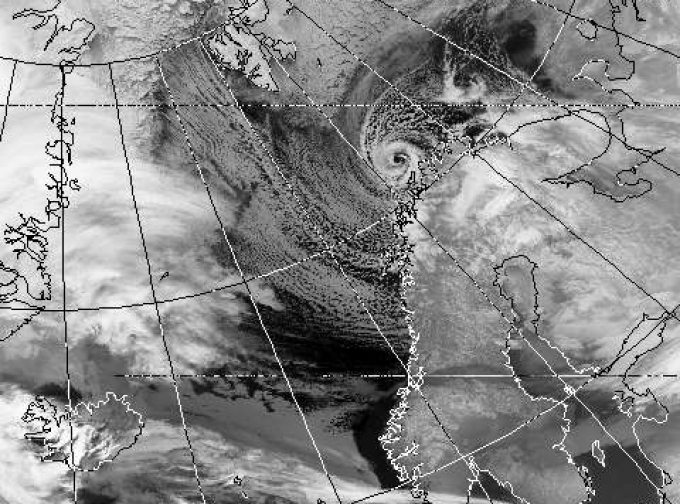Fewer polar lows in the polar North Atlantic
Scientists at GKSS Research Centre Geesthacht have shown that the frequency of polar storms in the North Atlantic, so-called ‘polar lows’, can diminish in the course of global warming. In addition, the formation areas of polar lows can shift further northwards in future. The results of the Geesthacht coastal researchers have now been published in the scientific journal ‘Nature’.
Hard to predict

Photo: Universitiy of Dundee
Polar lows are vigorous small-scale storms which occur over the oceans of the high latitudes and resemble tropical hurricanes. Even if polar lows do not reach hurricane strength at all times, they are particularly treacherous for shipping and coastal areas since they can develop very quickly. Added to that is the fact that polar lows are hard to predict due to their small diameter of only a few hundred kilometres.
Mathematics makes past and present visible

On the trail of the hurricanes: Dr. Matthias Zahn.Photo: HZG/ Christian Schmid
In order to find out whether the frequency of polar lows in the North Atlantic has already changed in the course of climate change, Dr. Matthias Zahn and Prof. Hans von Storch, Director of the Institute for Coastal Research at GKSS Research Centre Geesthacht and member of the University of Hamburg KlimaCampus (Climate Campus), first investigated global atmospheric data between 1948 and 2006.
In this process, they have developed a mathematical method to reproduce and detect such storms on a computer, which were not detected in the past due to lacking satellite coverage.
With the aid of regional mathematical models and future climate scenarios from the IPCC (Intergovernmental Panel on Climate Change) they now have also simulated polar lows in a warmed future atmosphere. They establish that the frequency of polar lows up to the end of the century can diminish by down to 50 %, and these weather events can shift further northwards in the course of global warming.
Interplay of ocean and atmosphere
Matthias Zahn, meanwhile researching at the University of Reading, attributes the decline of polar lows to an altered vertical temperature gradient:
“Nowadays, and in future, the atmosphere is warming up faster than the ocean underneath . As a result, the driving force – the difference in temperature between water and air – is diminishing”, says Matthias Zahn. This has a stabilising effect on the atmosphere, inhibiting the formation of polar lows . Northern regions, which are covered by sea ice today will be ice-free more frequently in future opening new areas of polar low development here.
